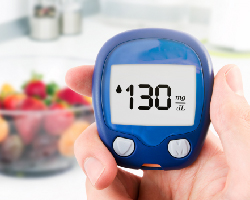
Jan. 11, 2022—One hundred years ago, 14-year-old Leonard Thompson, in Toronto, became the first person ever to survive the death sentence that type 1 diabetes had always been.
An injection of insulin—a brand-new treatment at the time—lowered the boy's sky-high blood sugar level. That became a shot of hope heard around the world.
Today, about 1.6 million Americans have type 1 diabetes. In people with that type of diabetes, the pancreas no longer produces insulin. People with type 1 diabetes depend on injections of manufactured insulin to control their blood sugar (glucose) level.
More than 32 million Americans have type 2 diabetes. With that form of diabetes, the body no longer responds normally to natural insulin. The pancreas's production of insulin can't keep up and blood sugar levels rise. Many of these people also rely on insulin to help keep their diabetes under control.
Because of insulin, people with both types of diabetes are living longer, healthier lives. Insulin helps save them from long-term risks such as heart disease, vision loss and kidney damage.
Different delivery methods available
Many people with diabetes inject insulin. Types of insulin range from rapid-acting to ultra-long-acting. Patients adjust doses and timing to balance their eating, activity and glucose levels.
Some people with diabetes use an insulin pump, which delivers insulin (usually the rapid-acting kind) throughout the day. It provides larger doses to cover meals or correct high sugar levels. Pumps are often worn on the hip. They can be detached from the infusion site, where a needle or tube delivers the insulin into the bloodstream.
The first automated pump system, called an artificial pancreas system, was approved by the U.S. Food and Drug Administration in 2016. It combines a pump with a continuous glucose monitor to deliver the right dose of insulin at the right time, automatically.
Now and in the future
Diabetes researchers continue to discover new ways to treat this common disease. For example:
- Type 2 diabetes often goes into remission after gastric bypass surgery for treating obesity. This bariatric procedure reduces stomach size and re-routes the digestive system to reduce how many calories are processed from meals.
- Keeping watch on kidney health is crucial for people with diabetes. Telehealth appointments and mobile-based health resources and applications help patients take control of their care.
- A new development that is still in the critical trial stage is something called islet cell transplantation. In type 1 diabetes, the body's own islet cells in the pancreas, which create insulin, are destroyed. In clinical trials, healthy islet cells from a deceased donor are injected into the bloodstream to the liver. The results so far show that the cells then begin to make insulin.
Want to know more about diabetes?
Learn if an insulin pump is right for you. And you can read more about Diabetes management in our health topic center.